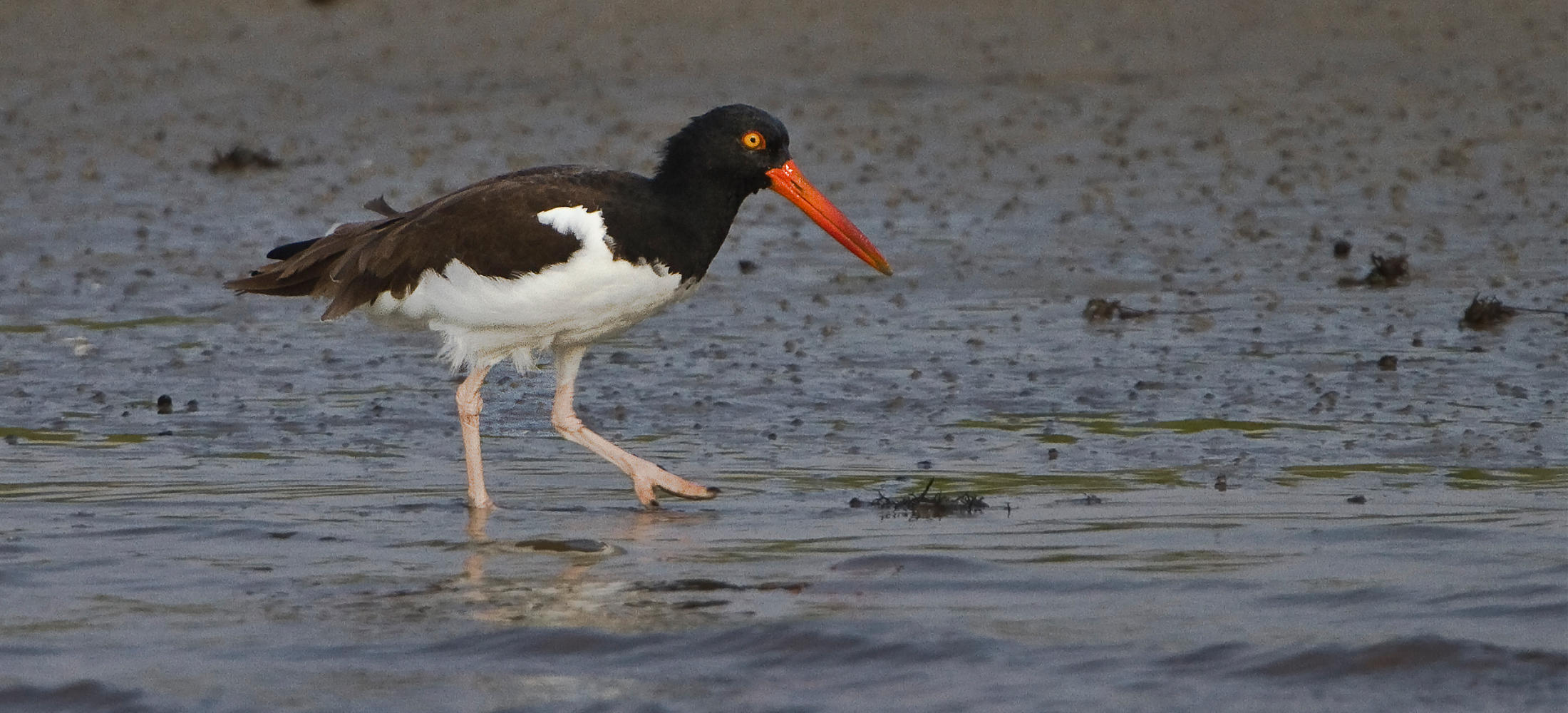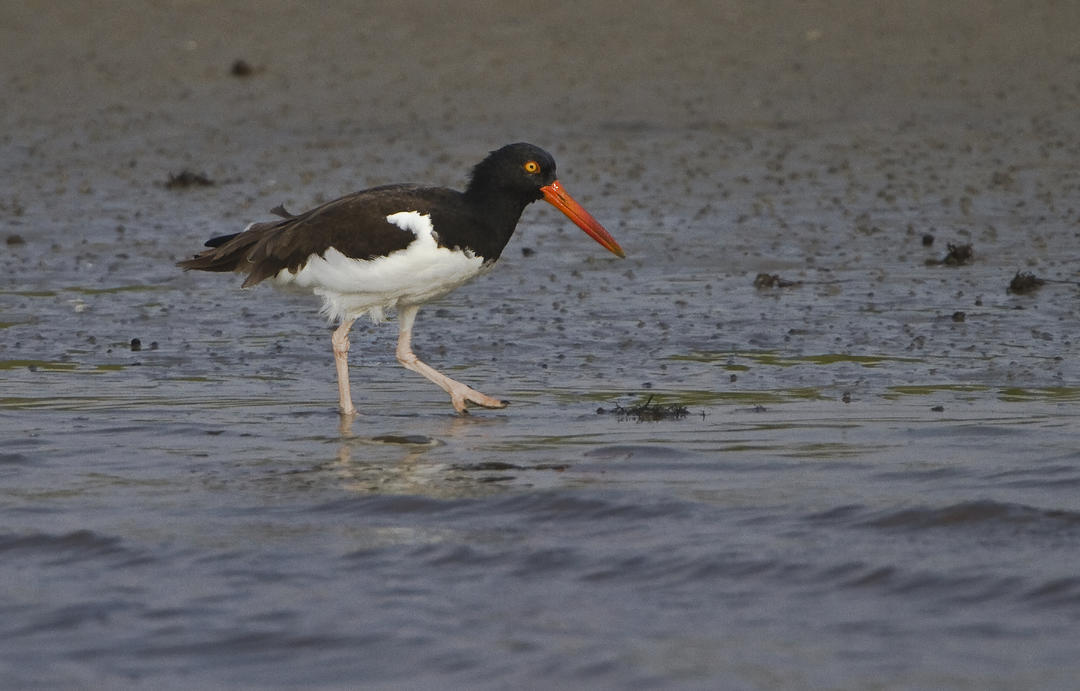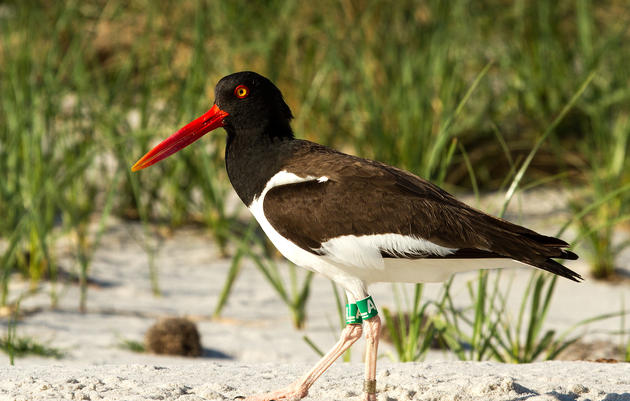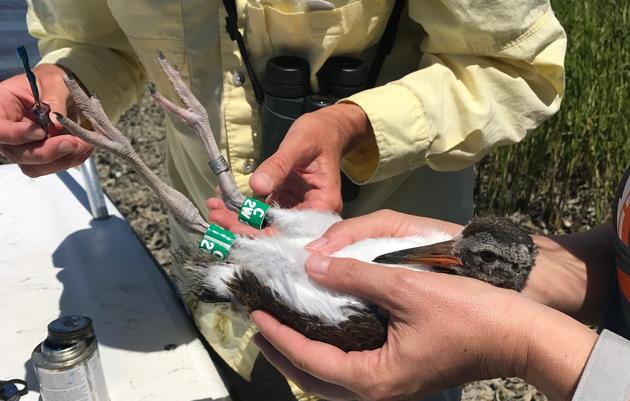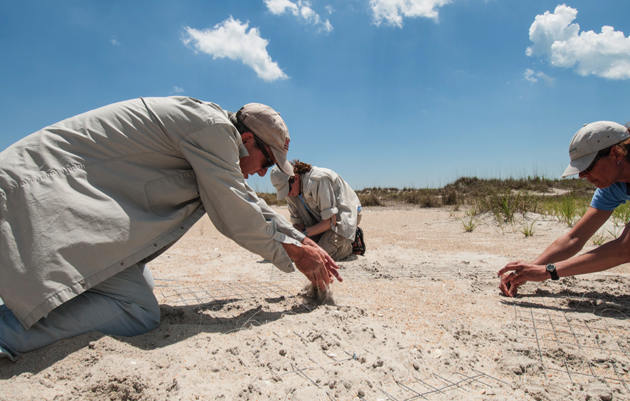The American Oystercatcher is one of North Carolina’s most recognizable and charismatic shorebirds.
Learn where to find it, how to help it, and more in this Priority Bird Profile: American Oystercatchers.
Why does this bird matter to Audubon NC?
American Oystercatchers are one of the focal species of our coastal work, as they rely on a variety of vulnerable coastal habitats – from beaches to marshes and estuarine islands - and face loss of nesting habitat at beaches through recreational disturbance, beach stabilization, and over-abundant predators that thrive in the presence of people.
Where can bird watchers see this bird/when?
SPRING & SUMMER
American Oystercatchers are perhaps the most recognizable of all North Carolina shorebirds due to their large red-orange bills. In the spring and summer, they nest on the sandy dunes of barrier island beaches like Wrightsville Beach and Lea-Hutaff Island and on estuarine islands in Oregon Inlet south, including both dredged-material islands and the shell rakes of natural marsh islands.
Islands are a favorite nesting spot because they have no mammalian predators, and they offer the right kinds of habitats for oystercatchers and other nesting birds.
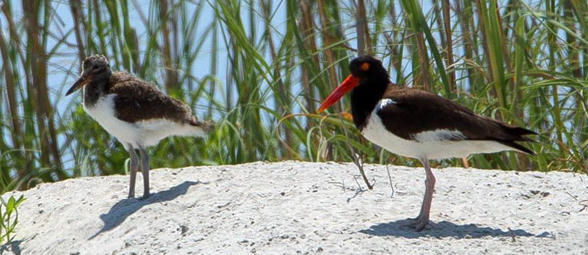
You can help protect these special birds! If you are out birdwatching or taking photos, note that most islands that host nesting birds are closed to human entry during the nesting season (April 1 - August 31) in order to protect them from disturbance.
It is possible to paddle or motor around nesting islands and view birds from a safe distance; however, if birds respond to you in any way, either by flying up, pacing at the shore, or otherwise acting agitated, you are too close and should back up in order to avoid stressing parents and causing harm to eggs or chicks.
WINTER
American Oystercatchers are found in North Carolina year-round.
When fall arrives, some of our nesting population migrates south to places like Cape Romaine National Wildlife Refuge in South Carolina and Cedar Key on Florida’s Gulf Coast. Others remain and congregate at roost sites around Rachel Carson Reserve, Masonboro Island Reserve, and the Cape Fear River. These are joined by new arrivals from northern breeding sites as far north as Massachusetts.
What is Audubon NC doing to help?
In North Carolina, our efforts are focused on managing important sites for oystercatchers, from dredge islands to oyster reefs on the Lower Cape Fear River. We post and patrol these sites to make sure nesting oystercatchers and other species are not disturbed, and we educate the public about what oystercatchers need to succeed.
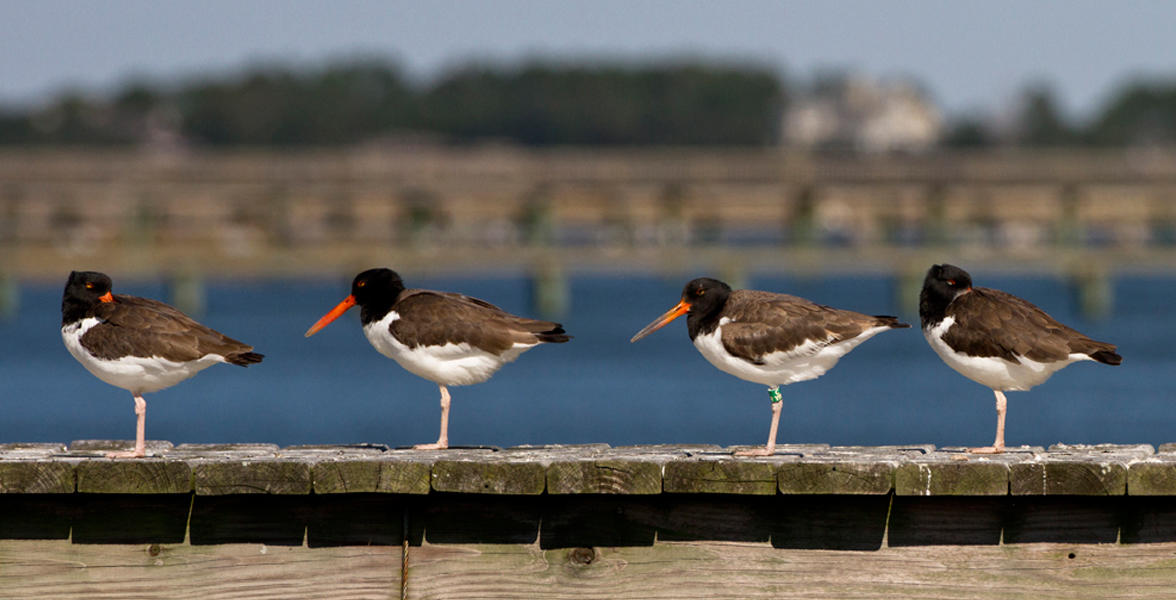
We are also an active part of the American Oystercatcher Working Group, a network of partners from Massachusetts to Mexico, that work together to collaborate on projects and share information. In North Carolina, we work with in-state partners to monitor productivity—how many are fledglings produced at key sites each year—track breeding and wintering populations, and improve nesting site management. Like many other organizations around their range, we also band adults and chicks at our sites and at partners’ sites to learn more about oystercatchers’ movements and demography. We also work with partners to provide capacity to band their adults and chicks as well.
North Carolina Partners
- North Carolina Wildlife Resources Commission
- NC Coastal Reserve
- Fort Fisher State Recreation Area
- Pea Island National Wildlife Refuge
- NC State University
- Cape Lookout National Seashore
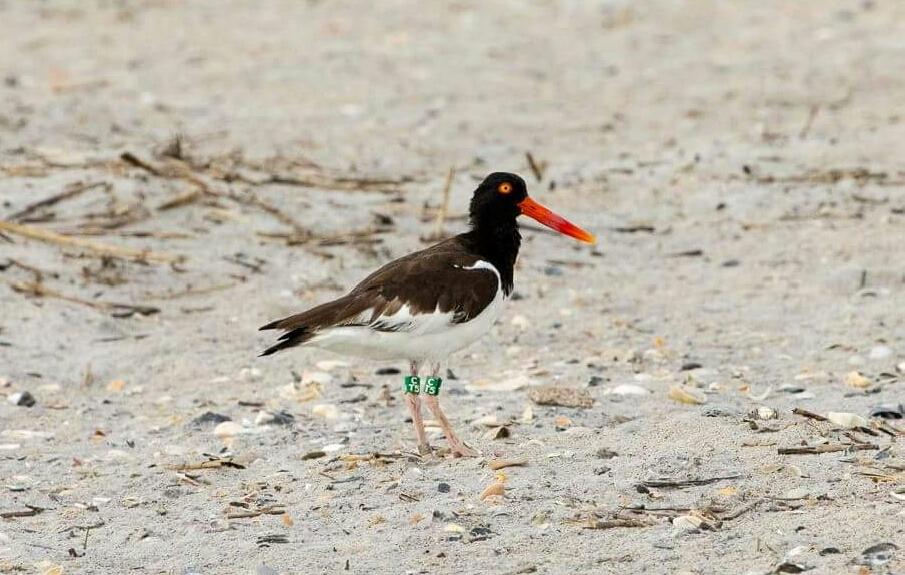
How can locals or beach visitors help this bird?
American Oystercatchers and other shorebirds depend on the coast for survival! They require the cooperation and help of people that use the beach to survive the challenges of living on the shore and raising their young. Making sure you avoid disturbing birds, including avoiding flushing non-breeding flocks, helps ensure their survival by allowing them to tend to their eggs and chicks, forage, and rest.
Here are some easy ways you can help oystercatchers, as well as other coastal birds.
- Respect and obey all postage and signage at the beach. The signs are there to help reduce disturbance to birds. When birds are disturbed off their nests, their eggs and chicks are exposed to danger from extreme temperatures and predators.
- Be attentive to birds. Even if you are outside a posting, if birds fly up or are agitated, you are too close. Move back and let them settle down.
- Obey all dog ordinances. When and where dogs are allowed on the beach, keep them on a leash and away from nesting areas and feeding or resting flocks. Dogs look like birds’ natural predators and cause more stress and disturbance, even if they aren’t actively chasing them.
- Pack out all your trash, including food, and don’t feed gulls. Leaving food waste behind attracts predators.

